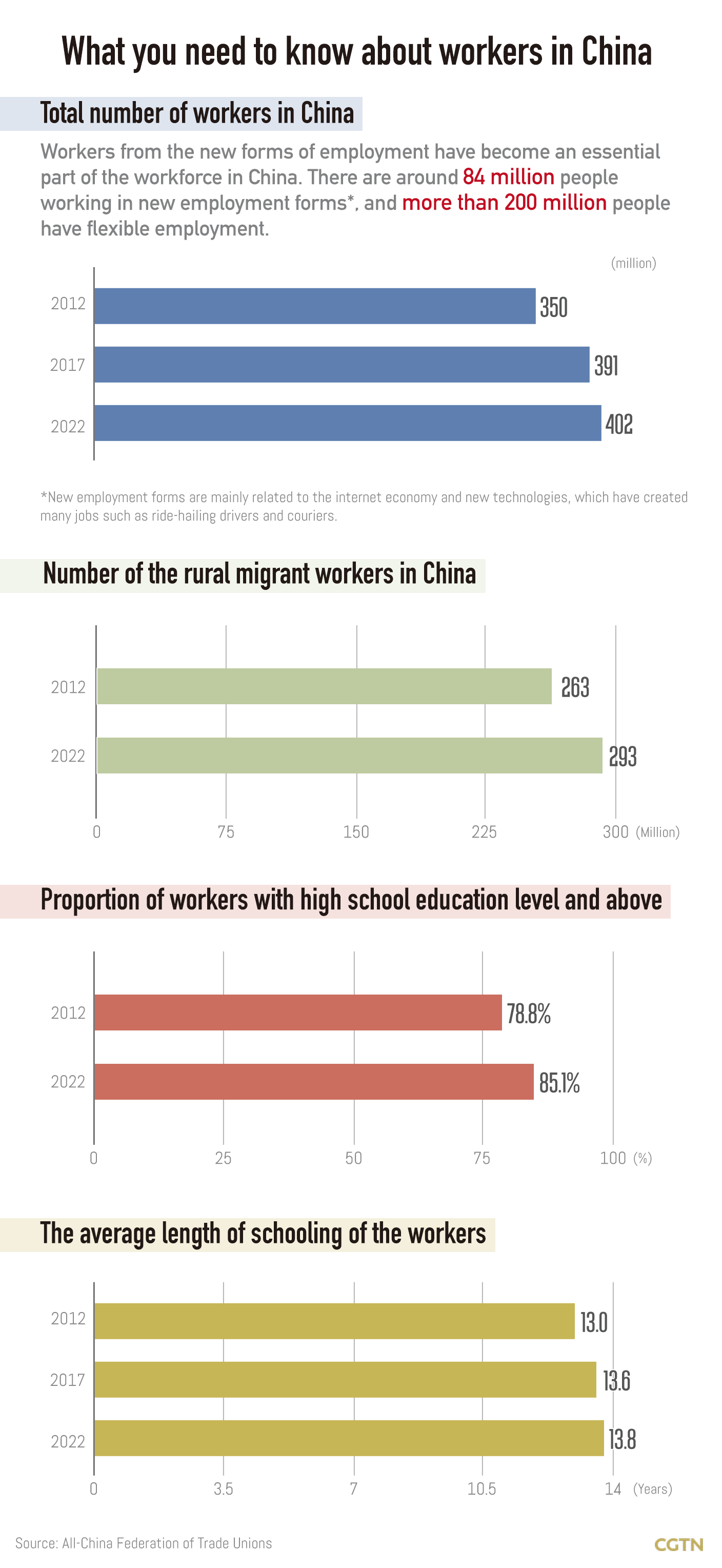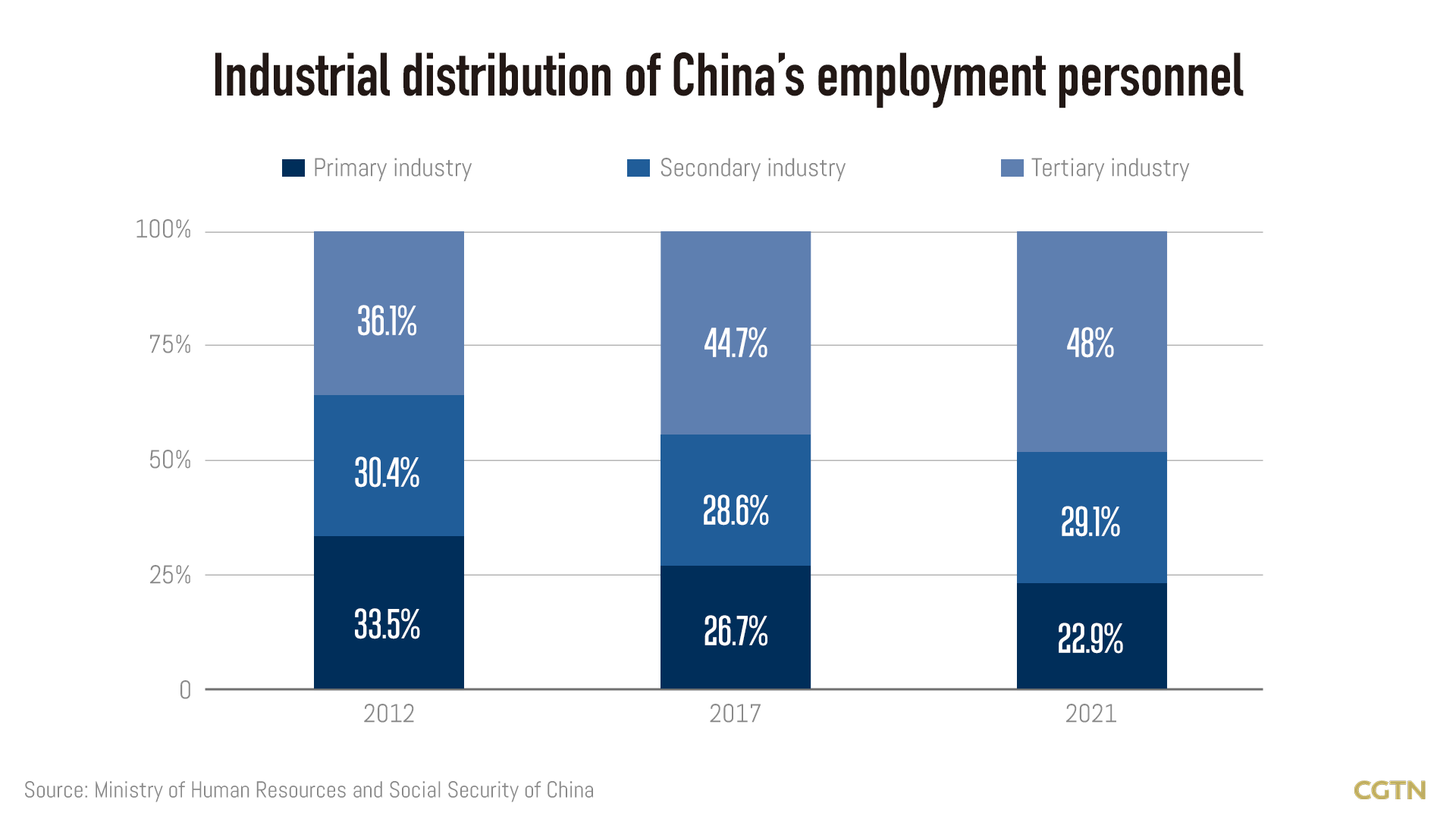With the rapid development of the platform economy, the number of workers engaged in new forms of employment, such as online car-hailing drivers and internet marketing specialists, has increased massively in China.
China's ninth national survey on working population status has recently been published, revealing several key findings.
National status of the workforce

About 84 million of the country's 402 million employed workers (employees who have signed long-term employment contracts with the employer) are engaged in new types of job, according to a national survey conducted by the All-China Federation of Trade Unions (ACFTU) last year, the findings of which were published last month.
Employed workers' educational levels have generally increased, and their technical skills have significantly improved. According to the report, the proportion of Chinese employed workers with a high school education level and above has increased from 78.8 percent in 2012 to 85.1 percent in 2022. Additionally, employed workers' average length of schooling has risen from 13 years in 2012 to 13.8 years in 2023.
The report also shows that the number of rural migrant workers in China increased from 263 million in 2012 to 293 million in 2021, indicating a steady increase in the rural labor force.
Workers who are engaged in new types of job such as car-hailing drivers, couriers and food delivery workers have become an essential part of the workforce, with a higher proportion of male workers in their prime and people with rural household registration.

According to data from the Ministry of Human Resources and Social Security of China, the industrial composition of China's employment personnel has undergone significant changes over the past decade.
In 2012, primary industry employment accounted for 33.5 percent of the total, while secondary and tertiary industry employment accounted for 30.4 percent and 36.1 percent, respectively.
However, by 2021, the proportion of primary industry employment had decreased to 22.9 percent, while secondary industry employment remained relatively stable at 29.1 percent. The most notable change was in the tertiary industry, which increased to 48 percent.
A blueprint for empowering emerging labor
As new technologies, business models and employment patterns are rapidly emerging, ensuring the rights and interests of the emerging workforce and creating a better development and professional environment for them have aroused social concern.
New forms of labor are characterized by high flexibility and autonomy. However, they often encounter certain protection issues, including the absence or ambiguity of social insurance, wages, benefits and labor contracts.
China issued a guideline back in 2021 to improve the protection of the rights of workers engaged in new forms of employment. For the first time, the guideline made clear that platform companies should shoulder their due responsibilities in protecting the lawful rights and interests of their employees.
"New forms of employment" was one of the hot topics during the 2023 Two Sessions, as deputies and committees sought "new solutions" to safeguard the rights and interests of this group more effectively.
Cao Peng, a member of the 14th National Committee of the Chinese People's Political Consultative Conference (CPPCC), suggested speeding up the promulgation of regulations or management methods for new forms of employment and defining different labor relationship standards clearly.
On March 4, the ACFTU submitted a proposal to the first session of the 14th National CPPCC regarding the difficulty in identifying labor relations for new forms of employment, suggesting that labor relations should be scientifically identified to clarify the rights, responsibilities and interests of multiple parties.
The proposal suggests further relaxation of household registration restrictions and implementation of social insurance policies for new forms of employment, as well as guiding and supporting new forms of employment to participate in corresponding social insurance based on their situations.
Enhancing the professional skills of new forms of labor and fostering their sustainable employment capacity are of equivalent importance, the proposal added. It called for the creation of a system to evaluate job levels for new forms of employment and the expansion of the existing title evaluation system to protect employment rights.
Data editor: Sun Yiwen
Graphics designer: Liu Shaozhen
(Cover: A food delivery worker weaves past courier vans, Beijing, China, May 28, 2022. /CFP)